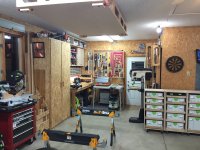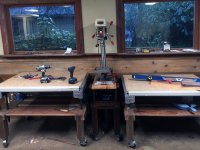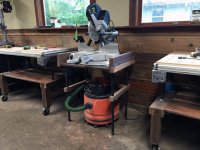ear3
Member
- Joined
- Jul 24, 2014
- Messages
- 4,341
Starting to think about modifying my workbench to better accommodate hand tool use, and one of the things I've found doing more hand plane work is that my current height of 34" is a little too short. I don't have room for a dedicated hand tool bench, so I wanted to make something that is a compromise between power and hand tooling. I might bring it up to 38". But I'm wondering what other people have done who have dual use workbenches when it comes to height. In particular, wondering what the tall folks do -- I'm 6'5"



